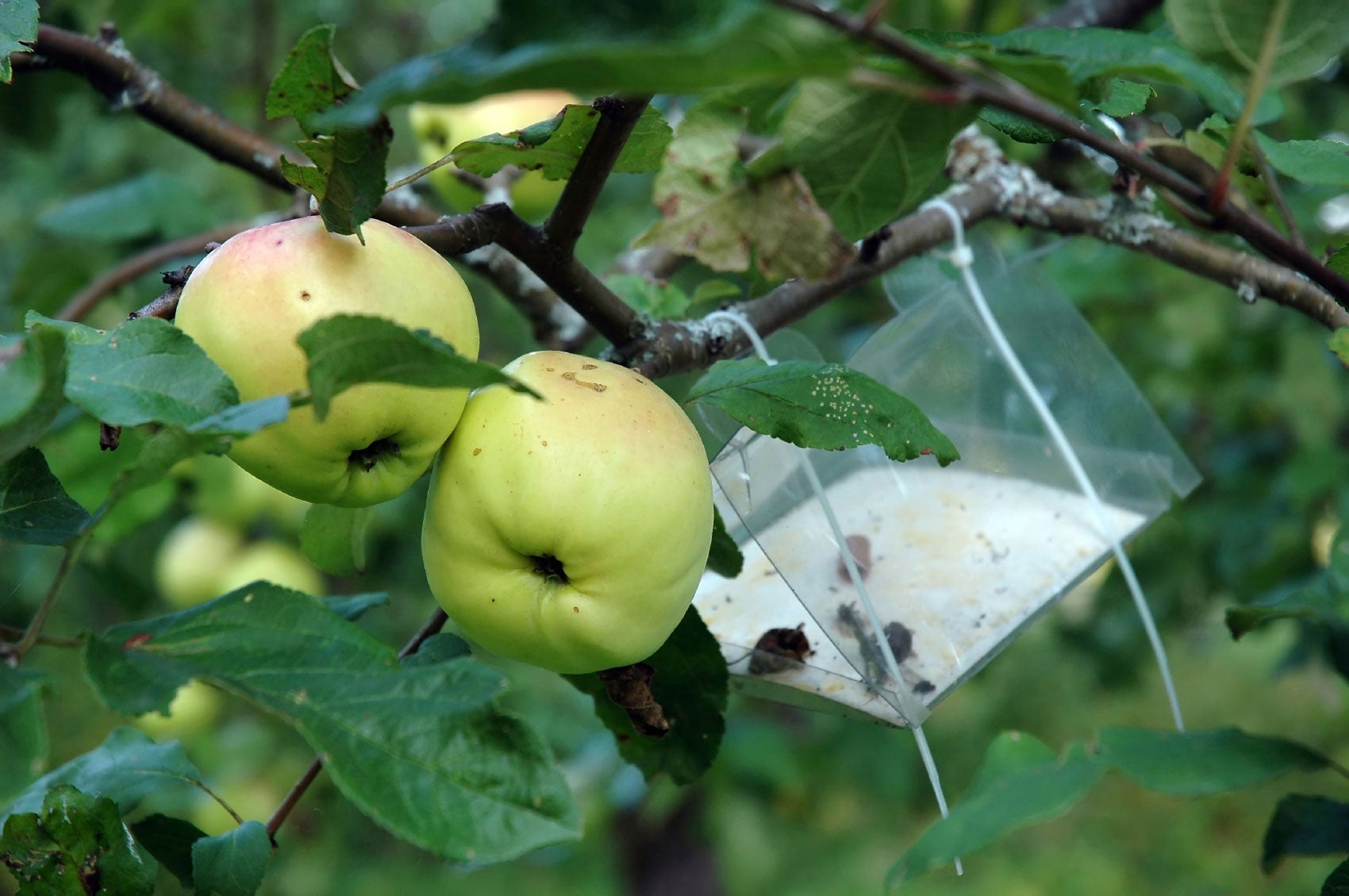Keeping Pests Out Of Apple Trees: Common Insect Pests Affecting Apples

As much as we love apples, there is another species which out-rivals our delight in this fruit-- a wide array of insect pests affecting apple harvests. What are some apple tree bug treatments that will assist us with keeping pests out of apple trees? Read on to learn more.
Pests of Apples
To properly devise a plan of attack against these marauders, we must first identify what they are. Unfortunately, there are numerous pests of apples just a few of which are:
- Round headed apple tree borer
- Apple maggot
- Codling moth
- Plum curculio
- San Jose scale
Then there are secondary pests like:
- European red mites
- Red banded and oblique banded leafrollers
- Rosy apple aphids
- Green fruitworms
- Leafhoppers
- Japanese beetles
- Wooly apple aphids
Everyone loves an apple! Unlike some crop pests, insect pests of apples are not always immediately evident until it is too late and major damage has been done to the resulting harvest. To maintain healthy trees with optimal production, not only do you need to recognize what insects to look for, but also understand their biology and combine this knowledge with appropriate preventive measures and controls as needed.
Major Insect Pests Affecting Apples
There are quite a few pests listed above, but the big three most detrimental to the apple tree are: Apple maggot flies, plum curculio, and codling moth. The best time to control these competitors is during mating season when they will be looking for egg laying sites early to midsummer on or near developing apples.
- Apple maggot flies: Apple maggot flies lay eggs in developing fruit in June or July. Once the eggs hatch, the larvae burrow into the apples. Sticky traps can be hung in the tree near fruit about three weeks after petals fall; two traps for trees less than 8 feet (2 m.) tall, and six traps for those 10 to 25 feet (3-8 m.) tall. Trees can also be sprayed with Surround in July, or Entrust, which is pretty pricey. Entrust contains spinosad which can be found in some home use spray products, but keep in mind they contain other ingredients that will disqualify them as organic.
- Plum curculio: Curculio is a ¼-inch long (6 mm.) beetle that tunnels through apples, leaving a telltale crescent-shaped scar. You can kill adults by spraying with phosment right after petal fall and then again ten days later. Do not spray when bees are active and wear protective clothing. Also, several applications of Pyganic (pyrethrum) post petal fall will reduce this beetle population. For non-chemical control, spread a tarp beneath the apple and shake to dislodge the beetles. Rake and destroy any dropped fruit to gradually reduce the infestation.
- Codling moths: Codling moths hatch within days and the larvae tunnel into the apples to feed and mature, killing the fruit. To battle codling moths, spray with Bacillus thuringiensis kurstaki in the evening 15 days after petal drop and again five days later.
While there are a number of all purpose fruit sprays to combat apple tree pests, keep in mind that they often target beneficial insects as well. If you do choose an all-purpose spray, do so after twilight when pollinators are not present. A chemical free option for thwarting harmful, dormant insects and eggs is to smother them with nontoxic horticultural oil in the spring prior to new leaf emergence.
How to Protect Apple Trees from Insects
Of course, there are some good insecticidal sprays out there that can assist with keeping pests out of apple trees, but there are also some simple cultural controls that will go a long way in solving the pest problem. Good pest management begins with good horticultural management. First and foremost is to maintain a weed-free environment surrounding the apple trees. Also, rake up last year's leaves and detritus from around the base of the tree. Some pests overwinter in this cozy layer, waiting to assault the tender leaves and buds in the spring. Your goal is to eliminate any hiding places. Mow around the tree or, better yet, replace grass with mulch. Remove plastic and paper tree guards where adult moths and flies like to overwinter, and replace them with wire mesh guards. Prune the apple tree every winter prior to new growth. Cut out any crossing branches, water spouts, and generally over-crowded areas. The goal is to open the tree up to sunlight and provide adequate aeration, which will promote fruit set and tree health while reducing the incidence of fungal diseases and insect habitats.
Sign up for the Gardening Know How newsletter today and receive a free copy of our e-book "How to Grow Delicious Tomatoes".

Amy Grant has been gardening for 30 years and writing for 15. A professional chef and caterer, Amy's area of expertise is culinary gardening.
